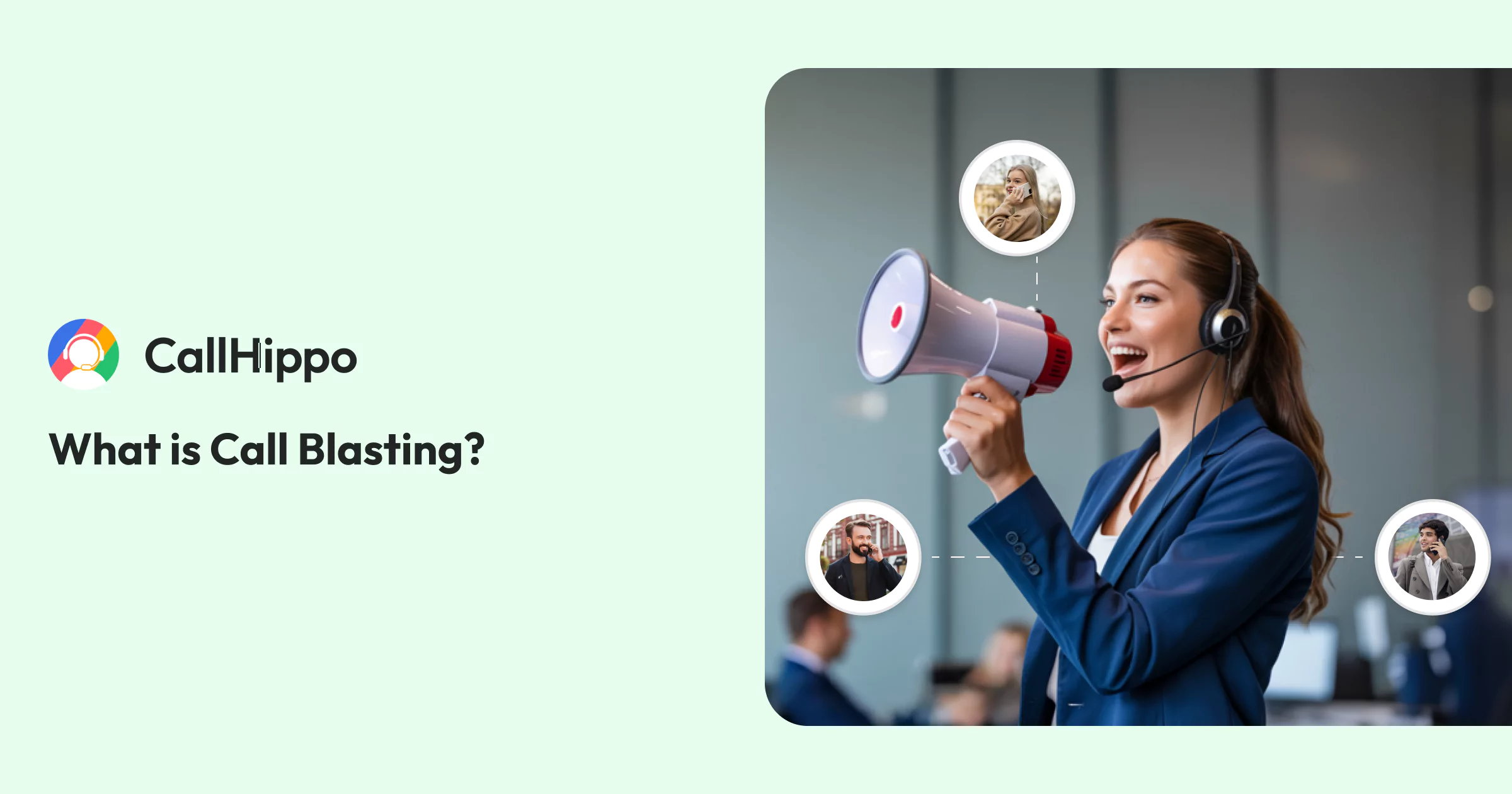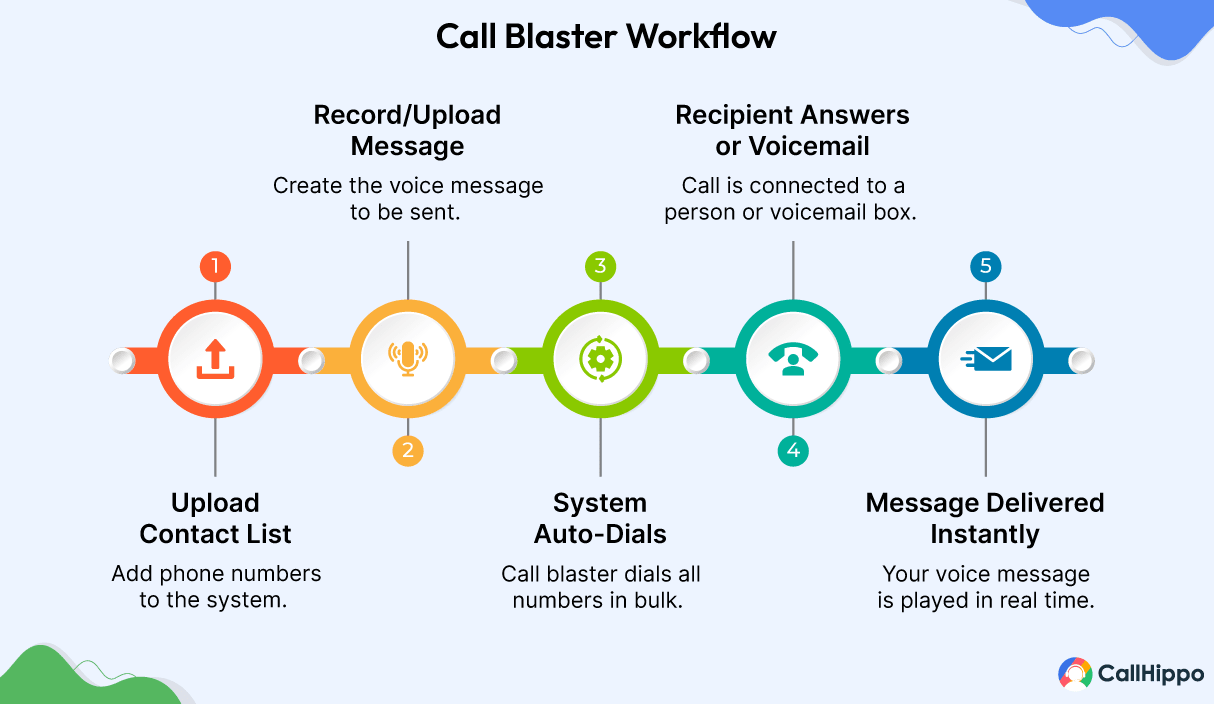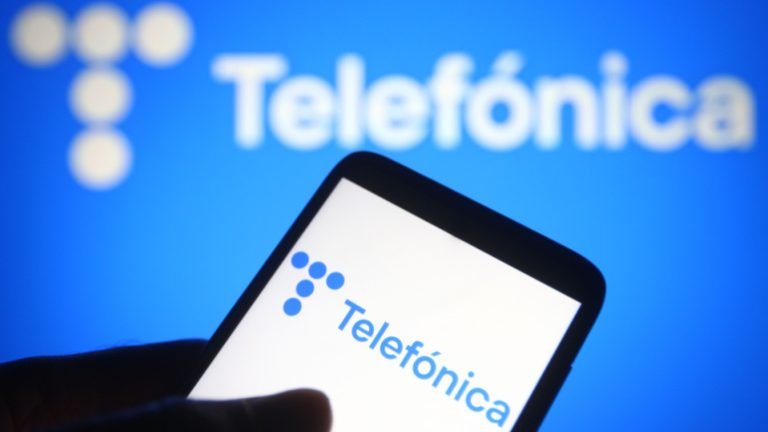

Updated : September 23, 2025
Everyone assumes digital channels dominate, but here’s the truth: 57% of C-level and VP buyers prefer a phone call over email or chat. That’s why voice still matters. And call blasting lets you scale that impact without losing the human touch.
This guide walks you through what call blasting is, how it works, its benefits, real-world use cases, challenges, best practices, key metrics, top providers, and future trends.
What is Call Blasting?
Call blasting is the technology of delivering a pre-recorded message or dynamic voice messages to a vast contacts simultaneously. Instead of dialing each contact number individually, a blast service plays the recorded message to all recipients.
Unlike traditional hosted PBX systems, which require hardware and manual dialing, modern online call blasting software allows companies to upload contacts, schedule campaigns, and measure results through an intuitive dashboard.
For example, healthcare organizations often utilize call blasting to trigger notifications about appointment reminders, while schools use it to send pre-recorded messages to parents and staff.
How Does Call Blaster Work?
A call blaster works by automating the process of mass calling. You start by uploading your contact list and a pre-recorded voice message.
The system then dials the numbers of customers simultaneously or in quick succession. So, when someone answers, they hear your message right away. If it hits voicemail, the system can drop the message there automatically. This way, small businesses save time, cut manual effort, and still get their message across to hundreds or thousands of people in minutes.


What are the Benefits of Call Blasting?
Call blasting is a powerful option that enables businesses to send out a message to thousands of individuals instantly. It helps in optimizing efficiency, lowering costs, driving engagement, and giving you easy access to performance statistics.
- Instantly reach thousands of people – It gets your message in front of a large group of people in seconds; there is no waiting time.
- More engagement than SMS or email – Telephone calls attract people’s attention and aren’t easy to tune out, which helps engagement and response rates.
- Less expensive than manual outbound teams – It automates calling to a large audience, thus requiring fewer sales or support staff to dial these calls manually.
- Measurable analytics – You’ll receive reporting on call status, pickup rates, and conversions from the beginning of the campaign to the end.
What are the Applications of Call Blast Software?
Call blasting apps can be effectively used for outreach, marketing campaigns, and critical notifications. Here are the main applications of the call blaster software:
1. Marketing & Promotions
Brands can send pre-recorded messages about sales, flash sales, or new services to their subscribers to enhance impact. For example, an e-commerce business can learn which phrases drive conversions and send them in real time to thousands of contacts.
2. Political Campaigns
Political teams will deliver pre-recorded messages, conduct polling initiatives, and remind voters when election day is approaching. This will allow candidates to reach a large population with ease while maintaining their marketing budget.
3. Customer Engagement
Call blasting also doubles as a smart engagement channel, helping businesses maintain ongoing touchpoints with customers without manual effort. Banks send automated reminders for payments, while retailers trigger campaigns that allow customers to press keys for offers.
Pro-Tip
Tailor each call blast based on your audience. Schedule messages at optimal times, personalize with names or past interactions, and segment by demographics or engagement to boost response rates.
When to Avoid Call Blasting Software?
While a call blast provides scale, it’s not for every scenario. Businesses should determine audience behaviors and the motivation for outreach, and then they can determine whether or not to blast calls.
1. Handling Low Call Volume
When working with fewer than 50 contacts, personal voicemail messages, or manual dialing, feel authentic and help you foster trust. Call blasts seem to work best at scale, not for one-to-one outreach.
2. Target Audience Prefer Texting
If the intended recipients are more active on texting in comparison to phone calls, then a call blast may feel intrusive. Therefore, try to use SMS or push notifications to engage the audience better.
Challenges & Considerations
Adopting call blasting comes with challenges that businesses need to navigate carefully. Success depends on compliance, message quality, and smart execution.
1. Regulatory Compliance
The U.S. TCPA laws require prior consent before sending voice messages. Non-compliance can harm your reputation and attract fines, so always maintain verified opt-in lists.
2. Risk of Being Perceived as Spammy
About 56 million Americans lost money through scam calls in 2023. So, customers are extremely cautious about spam calls. Ensuring each recorded message is to-the-point can avoid this risk of being perceived as spam.
3. Call Pickup Rates Vary
Caller ID recognition, contact list quality, and timing impact pickup rates. Hence, using local numbers and calling at optimal hours improves connection success.
Best Practices for Call Blasting
Successful call blasting is based on planning, personalization, and analysis. Best practices, as mentioned below, will encourage better ROI and satisfied customers.
1. Segment Your Audience to Make It Relevant
When you conduct a call blast specific to premium subscribers or a specific group, the messages will be more relevant and impactful. A broad and generic call blast dilutes the brand engagement.
2. Personalize as Much as Possible
If you can personalize the small portion of the messaging(customer’s first name, voice message recordings in multiple languages, etc.), it can make them feel more connected with your brand.
3. Test Campaigns with a Small Population Before the Entire Rollout
If you are looking to run a campaign via a call blast, then start your campaigns with the list in a small portion first and track real-time reports (like time of day, demographics, or engagement levels). Then, you can tweak your messages or forward the message to a larger population with confidence.
Quick Tip:
- Schedule test calls at different times of day or days of the week to identify peak engagement windows. Use these insights to optimize your main campaign schedule.
4. Analyze Reporting and Adjust Timing, Script, & Call Flow
Reports should be viewed regularly to tweak scripts, call hours, and manage IVR flows. It will help you drive better engagement metrics.
Key Metrics to Track in Call Blast Software
To ensure campaigns succeed, businesses must measure performance closely. These metrics help optimize future blasting strategies.
| Metric | Description | What It Indicates |
|---|---|---|
| Pickup Rate | Measures how many recipients answered calls. | A higher rate shows strong trust in the caller ID and relevance of the message. |
| Call Duration | Tracks whether contacts stayed long enough to hear the full recorded message. | Longer durations reflect better clarity and audience engagement. |
| DTMF Response Rate | Monitors how many recipients interact with the system using keypad inputs (e.g., Press 1, Press 2). | Essential for surveys, polling campaigns, and lead qualification. |
| Retry Success Rate | Measures how many missed calls were eventually answered after retries. | A high rate shows persistence improves overall delivery success. |
How to Select a Call Blaster Software?
Selecting the appropriate call blasting software can be the difference between success and failure for your campaigns. Aside from the basics, examine the characteristics, pricing, and reliability of the platform to make sure it works for your business.
1. Check the Other Features
Not all blaster tools are created in the same manner. The best platforms offer more than bulk calling; they offer sophisticated features that drive the most impact.
- Text to Speech – This converts written scripts directly to more natural-sounding voice calls, saving employee time on recording.
- Multilingual Recording Options – This will allow you to engage diverse audiences who will connect with you in their native language and build trust.
- IVR for Polling – This will allow you to engage in interactive surveys, collect feedback, and engage customers directly in your call.
2. Pricing Models
Make sure you look for software that, at least, has an option for pay-as-you-go or flexible subscriptions. This way, you are only paying for the feature that you are utilizing.
3. Support & Reliability
Uptime, Support, and SLAs matter a lot. A reliable provider will support you through your campaign, so if it fails mid-execution, you still have support available and a partner to help.
Quick Tip:
- Run a test campaign with a small but representative sample of your audience. Measure not only pickup rates, but also call clarity, delivery speed, and system reliability. A platform that performs well in a controlled test is far less likely to cause bottlenecks when you scale up.
Top Call Blast Software Providers
The market is crowded with a large number of call blast software providers. However, we have listed some of the standout call blast providers trusted by businesses worldwide:
Disclaimer:
The providers featured in this article were carefully selected after evaluating their features, reliability, and reputation in the market. We assessed each system for its performance, ease of use, and ability to scale with growing business needs. While these options are among the best solutions, it’s important to note that this list is not exhaustive and there may be other suitable providers available. Do your own research to make sure the provider you choose meets your specific requirements and is the right fit for your business communication needs.
1. CallHippo
CallHippo is a full-fledged AI-powered business communication system built for teams that want to move fast and sound professional. You get all the basics like call forwarding, call recording, and auto attendants. Apart from this, advanced tools like AI Voice Agents, AI chatbot, AI simultaneous calling, and many more differentiate CallHippo from others.
Features
Pros
- Route calls smartly with IVR and auto attendants.
- CRM and call analytics help you track and improve conversations.
- CallHippo works across different devices so that you can take calls on mobile, desktop, or browser.
Cons
- Users report a less responsive mobile app in comparison to the desktop app.
- Some find the interface less user-friendly, leading to a steeper learning curve for new users.
Pricing
- Basic plan: $0
- Bronze: $18/user/month
- Silver: $30/user/month
- Platinum: $42/user/month
Pricing are as on 19/9/2025
2. Twilio
Twilio is a cloud communication platform tailored for developers and enterprises that need customizable call blasting solutions. Through APIs, businesses can integrate call, SMS, and video features into their applications. Its flexibility allows enterprises to manage campaigns efficiently while maintaining compliance and monitoring performance metrics.
Features
- Programmable Voice API
- Call recording and transcription
- Interactive Voice Response (IVR)
- Real-time analytics and dashboards
- Global number provisioning
- CRM and third-party integrations
Pros
- Twilio is highly customizable via APIs.
- It can scale easily for large enterprise needs.
- This platform provides comprehensive documentation and developer support.
Cons
- Setup requires technical and development resources.
- Pricing is complex and usage-based.
- May be overwhelming for small businesses without a developer team.
Pricing
- Contact sales for detailed pricing plans.
Pricing are as on 19/9/2025
3. CloudTalk
CloudTalk focuses on call center features with a strong call blasting option. Perfect for sales and dedicated teams wanting automation plus CRM integrations. CloudTalk ensures high-quality calls, tracks performance metrics, and supports multiple communication channels, making it suitable for businesses that want to scale outreach without sacrificing customer experience.
Features
- Power and Parallel Dialers
- Call recording and analytics
- IVR and call routing
- CRM integrations (Salesforce, HubSpot, etc.)
- Voicemail drop
- Click-to-call and list automation
Pros
- CloudTalk offers a user-friendly interface for teams.
- Seamless CRM integrations substantially improve efficiency.
- Scalable plans cater to the varying needs of growing businesses.
Cons
- International calling options are limited.
- Pricing may be high for smaller teams.
Pricing
- Starter: $25/user/month
- Essential: $30/user/month
- Expert: $50/user/month
- Custom: Contact for pricing
Pricing are as on 19/9/2025
4. Vonage
Vonage delivers a global communication platform with call blasting capabilities. Its strength lies in enterprise-grade reliability and advanced security features. It supports programmable voice, call routing, and CRM integrations, enabling teams to maintain consistent engagement across channels. Vonage also provides analytics dashboards, toll-free and local numbers, and advanced call queuing.
Features
- Voice API and programmable voice
- Call recording and analytics
- CRM integrations
- Call queuing and routing
- Toll-free and local number support
- Real-time dashboards
Pros
- Vonage is a reliable and secure communication platform.
- The service supports global reach with local numbers.
- Offers a comprehensive set of features for enterprises.
Cons
- Pricing can be higher compared to other providers.
- Some advanced features require setup assistance.
- Customization is limited compared to API-first platforms.
Pricing
- Contact sales for detailed pricing plans.
Pricing are as on 19/9/2025
5. CallFire
CallFire specializes in voice broadcasting and SMS marketing. It’s widely used for political campaigns, nonprofits, and event-driven outreach where fast reach matters. Features like “Press 1” transfers, voicemail drops, and real-time analytics increase engagement and streamline campaign management.
Features
- Voice broadcasting
- SMS and MMS messaging
- IVR and call tracking
- Text-to-speech support
- Unlimited contacts
- API access
Pros
- There are no setup fees for the platform.
- User-friendly interface makes campaign management easy.
- CallFire supports both voice and text marketing campaigns.
Cons
- Advanced features are more limited than competitors.
- Customer support may have occasional delays.
- Not ideal for large-scale enterprise operations.
Pricing
- Lite: $99/month (2500 minutes/texts)
- Startup: $199/month (5500 minutes/texts)
- Grow: $299/month (10000 minutes/texts)
- Pro: $599/month (20000 minutes/texts)
Pricing are as on 19/9/2025
Future of Call Blast Services
The way small businesses use call blasting is evolving fast. With AI and automation shaping communication, here’s where the industry is heading:
1. AI-Driven Personalization
Instead of generic messages, AI enables hyper-personalized calls that reference customer data, past interactions, or preferences, making mass outreach feel one-to-one.
2. Shift Toward Conversational AI Agents
Static pre-recorded calls are being replaced by interactive AI agents that can respond to queries in real-time, turning one-way call blasts into two-way conversations.
Wrapping Up
Call blasting proves that voice still holds power in a digital-first world. It is an instrumental tool in creating a lasting impression on your client base.
When done right, it can scale authentic communication, cut costs, and deliver measurable impact in minutes. The key is to stay compliant, keep your messages relevant, and pick software that gives you flexibility without friction.
As AI reshapes this space, the future of call blasting looks even more personal and conversational. For businesses that want reach and resonance, it’s a tool worth mastering.
FAQ
1. Is Call Blasting Legal?
Yes, but regulations vary by country. In the US, for example, the Telephone Consumer Protection Act (TCPA) sets strict rules. Always ensure you have consent before running campaigns.
2. What is the Difference Between Call Blasting and Robocalls?
Robocalls are often unsolicited and have a negative reputation. Call blasting, when used ethically, is consent-based, targeted, and often includes value-driven communication.
3. Can Call Blasting be Integrated with CRM or Marketing Tools?
Absolutely. Leading platforms integrate with CRMs like Salesforce or HubSpot, enabling seamless lead management and tracking.
4. How Much Does Call Blasting Typically Cost?
Pricing depends on the leading provider and call volume. Expect rates from a few cents per call with discounts at scale. Some platforms also offer subscription models with unlimited or bundled minutes.
Published : September 23, 2025

Shubham Nikam, Senior Product Marketing Specialist, brings 5 years of experience in VoIP demand generation and lead generation. He specializes in B2B SaaS, focusing on cloud telephony and CCaaS. Shubham excels in developing go-to-market strategies, optimizing product messaging, and leveraging AI tools to drive growth and customer acquisition.


Let’s Stay in Touch
Subscribe to our newsletter & never miss our latest news and promotions.
![]()
![]() +24K people have already subscribed
+24K people have already subscribed
Source



